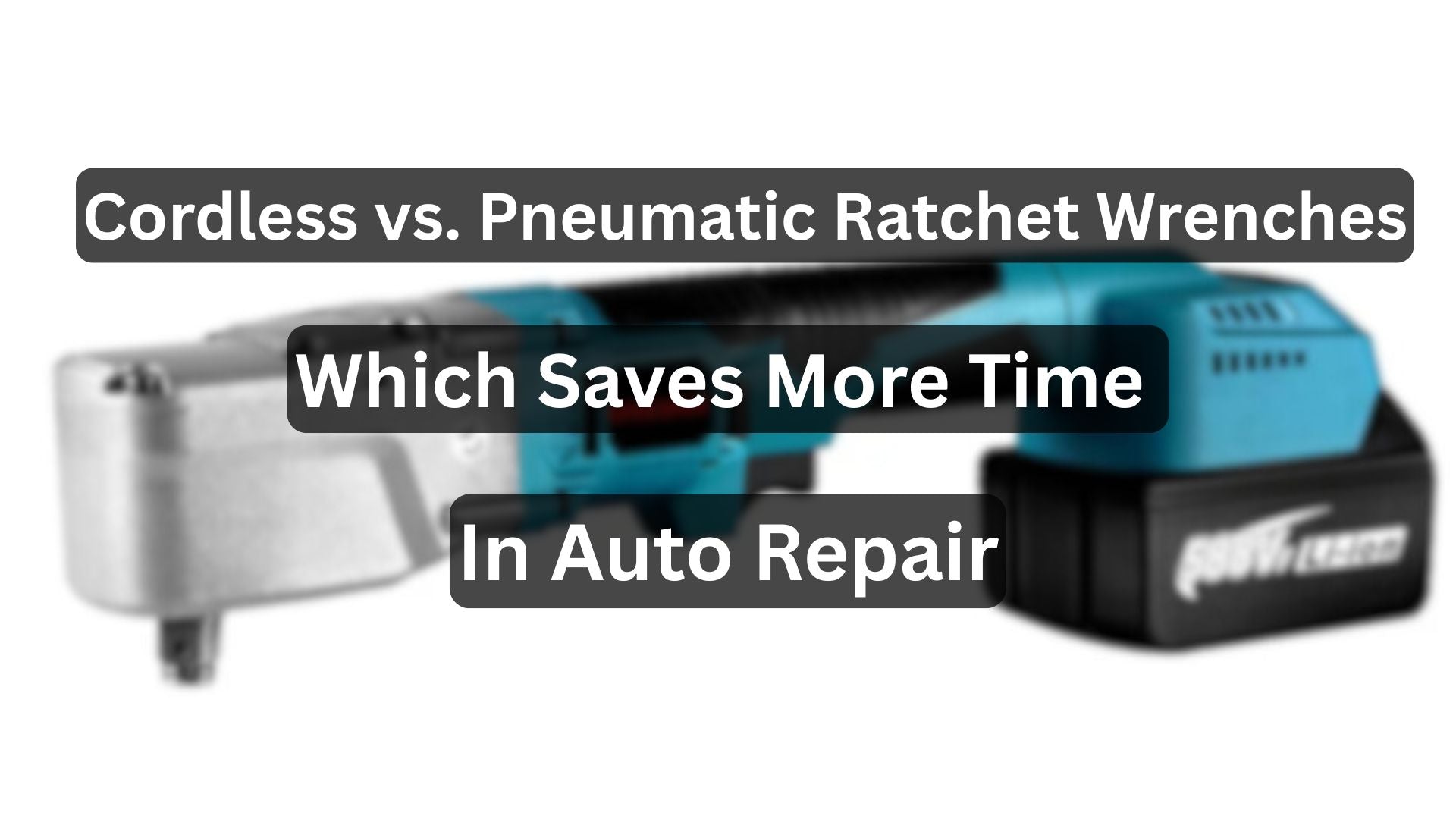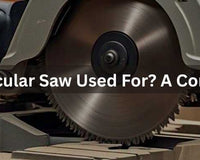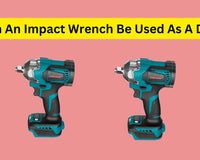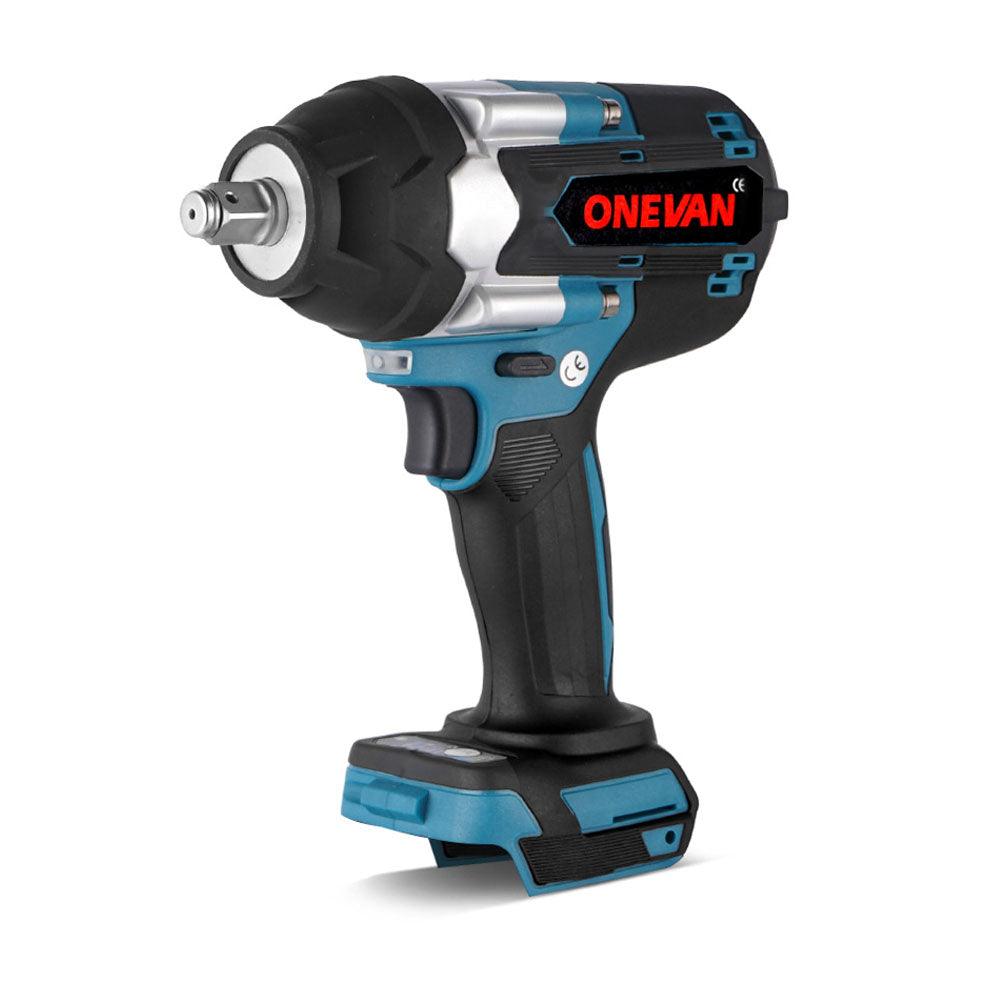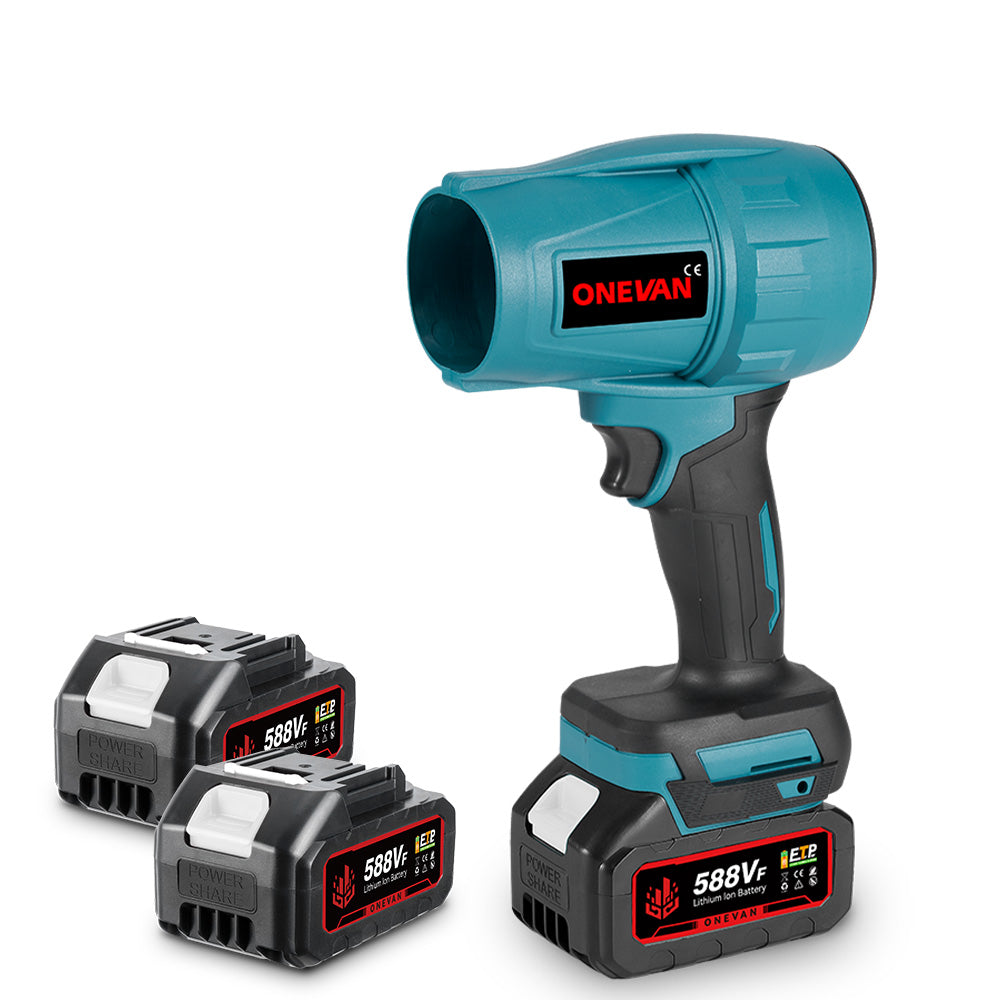For auto repair, it can take much longer to complete the job if you don’t have the right tools. Two standard options are cordless and pneumatic ratchet wrenches, each with specific pros and cons. In this article, we’ll compare these two types of tools in real-world scenarios to observe how they perform in various situations so you can choose the best ratchet wrench for auto repair for you.
1. Cordless vs. Pneumatic Ratchet Wrenches: Tight-Space Access
When it comes to auto repair, counter service, and other activities such as working in cramped spaces like engine bays or under-dash maintenance, the tools you use can significantly affect the efficiency and convenience of your work. Cordless ratchet wrenches (also called cordless ratchets) are among the most common tools used in the automotive repair shop, along with their classic cousin, the pneumatic ratchet wrench. Each offers specific benefits in terms of tight-space accessibility. Let’s look at how they compare within this context.
Cordless Ratchet Wrenches
No Hose Restrictions
Cordless ratchet wrenches have one significant advantage over pneumatic systems: No hoses can outmanoeuvre in tight spaces. Because cordless ratchets wrench sport a 360° turn, they’re instrumental in cramped spaces like engine bays, where regular tools can struggle. This allows you to use the tool freely without the hassle of tangling hoses in confined spaces. This versatility is especially valuable on jobs like under-dash repairs, where space is limited and room to manoeuvre is restricted. A case study on compact vehicle repairs indicates that mechanics utilizing. Studies have shown that mechanics using cordless ratchet wrenches can experience an average time savings of approximately 15% compared to traditional tools. There is no need to mess around with air hoses or compressors, which allows repairs to be done quicker and more efficiently—a difference-maker in high-pressure work environments.
Compact Design Advantages
In addition to their tight-space accessibility, the compact design of cordless ratchet wrench is another critical benefit. These tools also have a svelte profile, making access to tight quarters much more manageable than bulkier tools that won’t fit. By contrast, pneumatic systems usually include hoses, which, if in a tight area, can make the tool awkward and awkward. Cordless ratchets are lightweight and ergonomic, meaning they can be used for long periods and keep user fatigue to a minimum. This makes them perfect for technicians who work fast and act efficiently within confined spaces.
Pneumatic Ratchet Wrenches
Air Hose Challenges
Pneumatic ratchet wrenches are extremely popular for the charge they deliver, particularly for heavy-duty jobs. However, they aren't without their struggles. The air hose is the most readily apparent disadvantage. Hoses are prone to tangling, restricting your movement and creating setup time. Usually, it requires 2–4 minutes of preparation for each workpiece to arrange the air hose. This is particularly suited for environments where you may want to access various points in a vehicle at once, such as filming a part job in an engine bay. Furthermore, pneumatic or air tools are less portable than cordless tools, given that an air compressor is required. You have to set up the compressor and ensure the proper air supply, which adds more time to the job.’ These points can make pneumatic ratchets cumbersome when speed and efficiency are desired.
Suitable for Open-Space Repairs or Heavy-Duty Industrial Applications
Air hose difficulties aside, Pneumatic ratchet wrenches excel in open-space repairs and heavy-duty industrial applications. In circumstances where access to tight spaces matters less than power and torque, nothing can touch them. Because pneumatic tools offer a constant torque output, they can be ideal for bigger mechanical jobs requiring significant torque. However, their size and reliance on an external air source make pneumatic ratchet wrenches impractical in tighter spaces where manoeuvrability is crucial.
2. Cordless vs. Pneumatic Ratchet Wrenches: Torque Performance
Regarding torque performance, auto repair harnessed with the correct ratchet wrench can bring significant efficiency and precision. Cordless ratchet wrenches offer advantages, just as pneumatic ratchet wrenches do; however, understanding their torque capabilities through comparison can help you choose the right tool for the job. We will compare their torque performance here to help you decide which is best.
Cordless Ratchet Wrenches
Adaptive Torque Control
Adaptive torque control is one of the flagship elements of cordless ratchet wrenches. While pneumatic tools (above) deliver consistent power to fasteners, cordless tools can adjust the torque applied, which is essential to avoid overdriving fasteners and damaging the clamped parts. This is especially crucial in the case of aluminium or plastic parts, which are more susceptible to stripping or snapping when stressed too much. Cordless ratchet wrenches allow the user to set specific torque levels, preventing damage to fasteners or the surrounding materials.
High-Torque Capabilities
Torque capacity is a big category in which modern cordless ratchet wrenches have advanced significantly. What was once a minimal product category now provides comparable performance to your mid-range pneumatic ratchet. It is rated for torque, typically 55–80 ft-lbs. These do not have the crazy torque levels you can find with heavy-duty pneumatic tools. Still, they will suffice for nearly every automotive repair application. This makes them suitable for day-to-day repairs as they balance power and control. With sufficient torque for most applications, cordless ratchet wrenches are ideal for working on engine components, suspension systems, and general maintenance tasks.
Pneumatic Ratchet Wrenches
Excessive Torque Risks
Pneumatic ratchet wrenches, on the other hand, are potent tools. While this high torque can be advantageous for heavy-duty applications, it risks damaging delicate components. Though pneumatic tools produce more torque than cordless ratchets, this can lead to stripping threads or damaging light-duty components. For smaller or fragile fasteners, pneumatic ratchet wrenches must be treated carefully to prevent damage. Although the power could be helpful in large industrial systems, it may not be ideal for more precision and finesse applications.
Compressor Dependency
One other consideration in your decision to get pneumatic ratchet wrenches is that they require an air compressor. Pneumatic tools are powered by compressed air, leading to inconsistency in the power output. The tool may lose power whenever the compressor needs to recharge, leading to interruptions in your workflow. This inconsistency can be maddening, especially during time-sensitive repairs. Unlike pneumatic ratchet wrenches, which require connections to air sources that may interrupt workflow, cordless ratchet wrenches operate on battery power and provide consistent performance without needing an air compressor.
3. Cordless vs. Pneumatic Ratchet Wrenches: Cost
Cost is among the most important factors when choosing between cordless and pneumatic ratchet wrenches. Both have pet products, pricing structures with pros, and hidden fees that could affect your long-term budget. Here, we will check out the cost differences and the implications for your workflow and costs.
Cost Comparison
Cordless Ratchet Wrenches
Cordless ratchet wrenches generally have a higher upfront price than pneumatic ratchet wrenches. These tools can be pricier due to the cost of rechargeable batteries and the incorporation of advanced technology aimed at enhancing their versatility and portability. However, purchasing the cordless ratcheting tool comes with many long-term savings that are worth it, particularly in spaces where air compressors are not needed. Firstly, the great advantage of cordless ratchet wrench is that they have no compressor expenses. With pneumatic tools, you need to invest in a compressor, air hoses, and the ongoing costs of maintaining the air system—there’s no need for that with a battery tool. Moreover, you won’t be wasting energy or replacing components all the time like you have to with pneumatic systems. Cordless ratchets are more expensive at the outset. Still, the fact that they are self-contained makes them generally cheaper over the long term.
Pneumatic Ratchet Wrenches
Compared to cordless ratchet wrenches, pneumatic ratchet wrenches are more cost-effective than the actual tool. That makes them a compelling choice if you’re on a budget and don’t mind acquiring some supplementary gear. However, you must consider hidden expenses when using the air compressor and hoses and how much energy it takes to run them. You need air, which increases these costs quickly, particularly if using multiple pneumatic tools in a shop. An air compressor isn’t a one-time purchase; it requires regular maintenance, which will increase your operating expenses. Also, pneumatic systems typically illicit inefficient use, with additional costs from electricity or compressed air consumption. They may seem cheaper initially, but they are usually more expensive to run and maintain than their electric counterparts over time.
Operational Downtime Comparison
Cordless Ratchet Wrenches Workflow
When looking at operational downtime, cordless ratchet wrenches have a considerable benefit. They don’t need a warm-up period, as pneumatic tools do. Having been able to use them immediately after turning them on might save you 5–8 minutes per hour. In a fast-paced world like this, where time is money and every minute counts, being able to start working instantly with no lag time is worth its weight in gold. This extra efficiency saves time and delivers a productivity boost, so most general repair and maintenance users opt for cordless ratchets.
Pneumatic Ratchet Wrenches Workflow
Pneumatic ratchet wrenches typically require a significant amount of time to set up. You have to deal with air hoses, hook the tool to the compressor, and wait for the compressor to build up the requisite pressure. These tasks can lead to significant delays; if not managed properly, they can severely hinder your workflow. Pneumatic tools even require compressor servicing and hose replacements, increasing downtime. Although pneumatic tools provide great power, the downtime for preparation and maintenance reduces overall output.
4. Why Cordless Ratchets Save More Time
Cordless ratchet wrenches save a lot of time in auto repair as they provide quite a bit more efficiency than pneumatic ratchets or any other tool from the past. Here's why:
No Setup Delays
One of the most significant time-saving factors is the instant usability of cordless ratchet wrenches. Unlike pneumatic ratchets, which must be set up by connecting hoses and preparing compressors, cordless ratchets are plug-and-play right out of the box. This removes the lag between setting up and waiting for equipment to charge. Cordless ratchets allow mechanics to work continuously without breaks, which is essential for managing complex tasks efficiently in a fast-paced environment.
Ergonomic Efficiency
The other significant benefit of cordless ratchet wrenches is their lightweight design and hose-free operation. Cordless tools are generally easier to handle than pneumatic tools due to the absence of hoses, reducing the physical strain on mechanics. This design has been shown to reduce mechanic fatigue by up to 30%, which means workers do not feel tired after a long time working. Enhanced ergonomics—and a better reach into tight spots to crank quickly—lift overall efficiency.
Adaptability
Finally, cordless ratchets are super versatile. Because pneumatic ratchets are more specialized and good for heavy-duty jobs than cordless tools, they can handle around 95% of repairs. As a result, they become a more versatile and convenient solution for everyday use in a wide range of repair tasks.
5. Real-World Time Trials: Cordless vs. Pneumatic Ratchet Wrenches
Efficiency is crucial in auto repair, and the tools you use can greatly impact how quickly and safely you complete the job. Let's examine real-world time trials to see how cordless ratchet wrenches and pneumatic ratchet wrenches perform in three common situations.
Scenario 1: Getting Work Done in the Engine Bay
Cordless Ratchet Wrenches
Cordless ratchet wrenches are significantly faster when removing an alternator from a tight engine bay. With no hoses to worry about, that mechanic can work continuously, meaning the entire task is done in just 22 minutes. No compressor setup is required, making the tool ready instantly.
Pneumatic Ratchet Wrenches
In comparison, pneumatic ratchet wrenches require approximately 28 minutes to complete the same task under similar conditions. Hose relocation and setting up the compressor also introduce expensive turnaround time in the repair process. Using a pneumatic ratchet wrench is a more complicated and slower process than simply using a cordless ratchet wrench.
Scenario 2: Tire Rotation
Cordless Ratchet Wrenches
With cordless ratchet wrenches, rotating tyres take 10 minutes, and the torque is consistent throughout. Without hoses, the mechanic can push around and inflow throughout the range, improving efficiency.
Pneumatic Ratchet Wrenches
For pneumatic ratchets, the time increases to approximately 14 minutes because you must first turn on the compressor before beginning. Conclusion: It takes a lot of time to set up, which makes the process less efficient than cordless ratchet wrenches.
Scenario 3: Removing a Rusty Bolt
Cordless Ratchet Wrenches
Cordless ratchet wrenches Leverage Variable torque modes to eliminate the risk of stripping or damaging the bolt; removing rusted bolts takes 8 minutes . The tool can adapt if a set force is required, guaranteeing accuracy.
Pneumatic Ratchet Wrenches
Pneumatic ratchet wrenches remove the bolt in 6 minutes, but they have a 20% chance of damaging the bolt or shear because of their high, constant torque. This results in a faster operation but also carries a higher risk of damaging the part.
6. Conclusion
Cordless tools speed up many common automotive procedures. They’re time-saving: just like that, they’re ready in seconds, and you don’t have to worry about dealing with a compressor or hoses to get consistent performance. Hose-free auto repair tools like cordless ratchet wrenches can accomplish the same tasks without the hassle, making them ideal for most jobs. Pneumatic tools can be fantastic in specific situations, but for most auto repairs, the convenience of cordless tools is hard to beat. So, if you’re asking yourself, Are cordless tools faster? The answer is yes — especially when it relates to minimizing downtime and enhancing workflow efficacy.
7. FAQs
Q1: Can I use cordless ratchet wrenches for suspension work?
Yes, many modern cordless ratchet wrenches are designed with sufficient torque to handle a wide range of suspension work.
Q2: Are pneumatic ratchet wrenches better than cordless ones?
With proper maintenance, pneumatic ratchet wrenches can last for several years; however, advancements in technology are making cordless ratchets increasingly durable as well.
Q3: Can I use cordless ratchet wrenches in the rain?
Cordless ratchet wrenches should not be used in very wet conditions unless the manufacturer states that they are water-resistant.
Q4: What is the replacement frequency of cordless batteries?
Cordless batteries usually need replacing after 2-3 years of use.
Q5: Are pneumatic ratchet wrenches outdated?
Not really. Pneumatic ratchet wrenches are still extensively used for heavy-duty work, but cordless ratchets are gaining popularity for general repairs.
Tags: cordless ratchet wrenches, hose-free auto repair tools, time-saving tools, auto repair efficiency, pneumatic vs cordless, ratchet wrench comparison, fast repair tools, mechanic tools, cordless tools, auto repair tools

